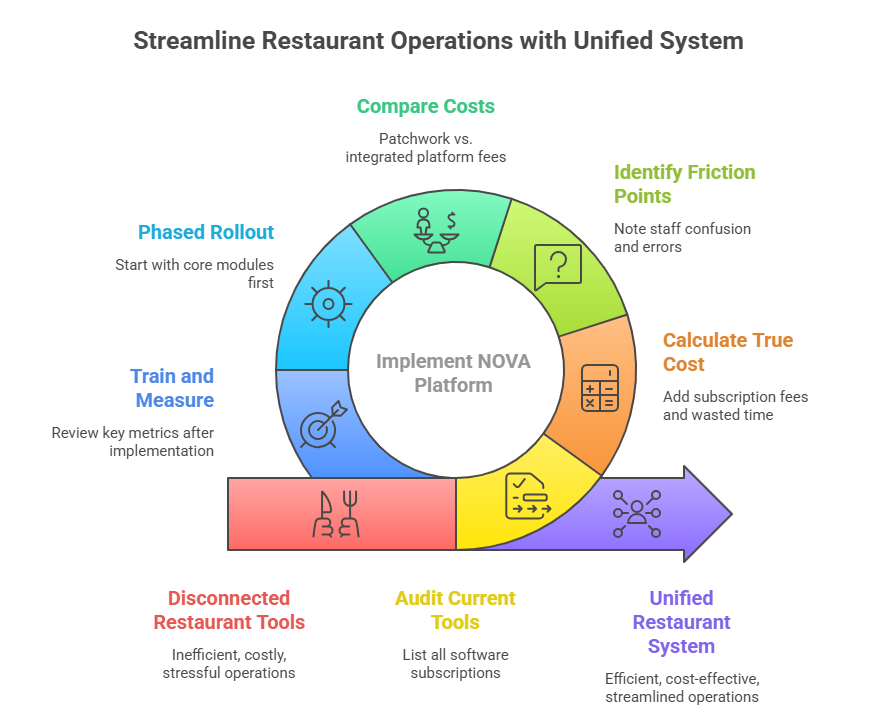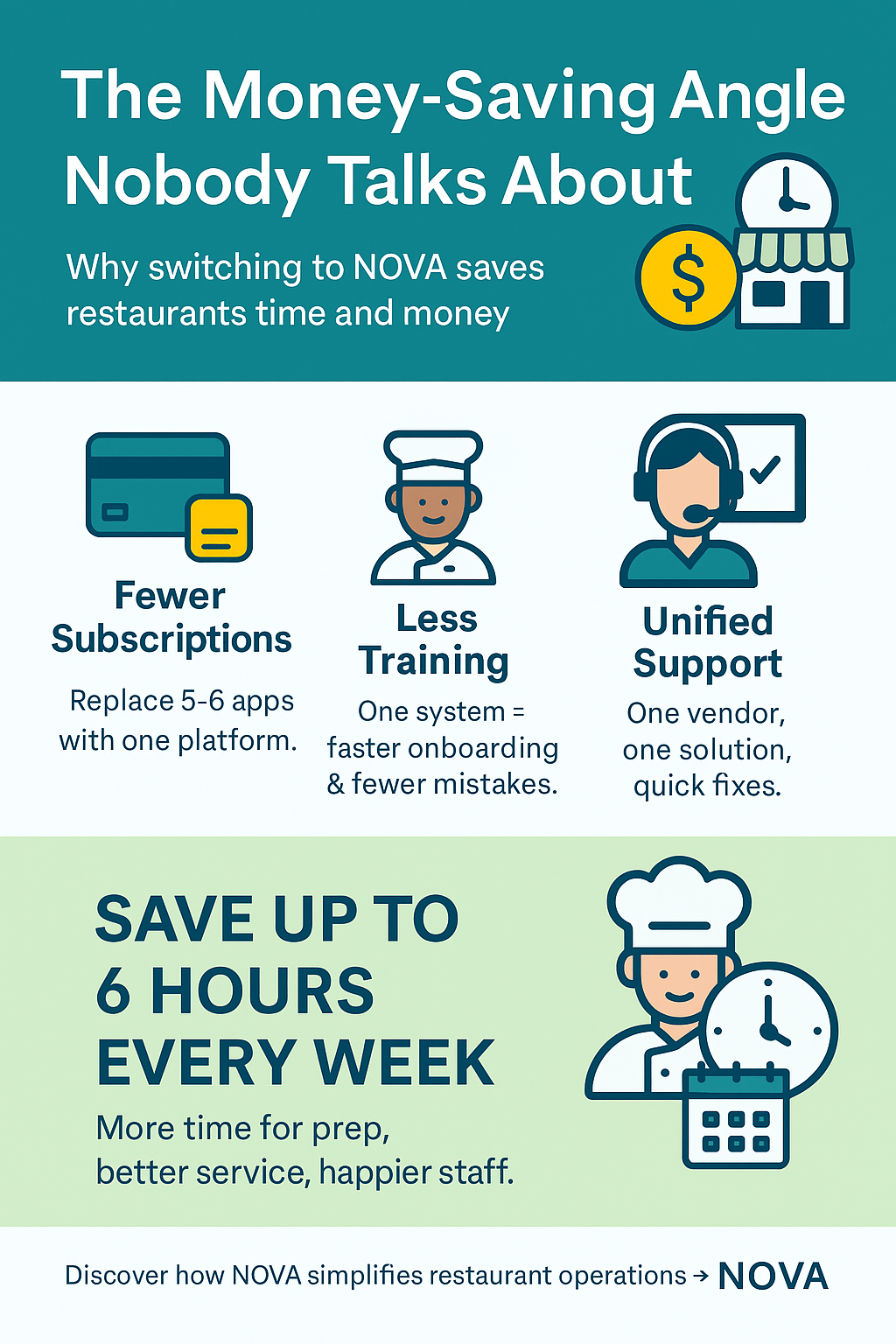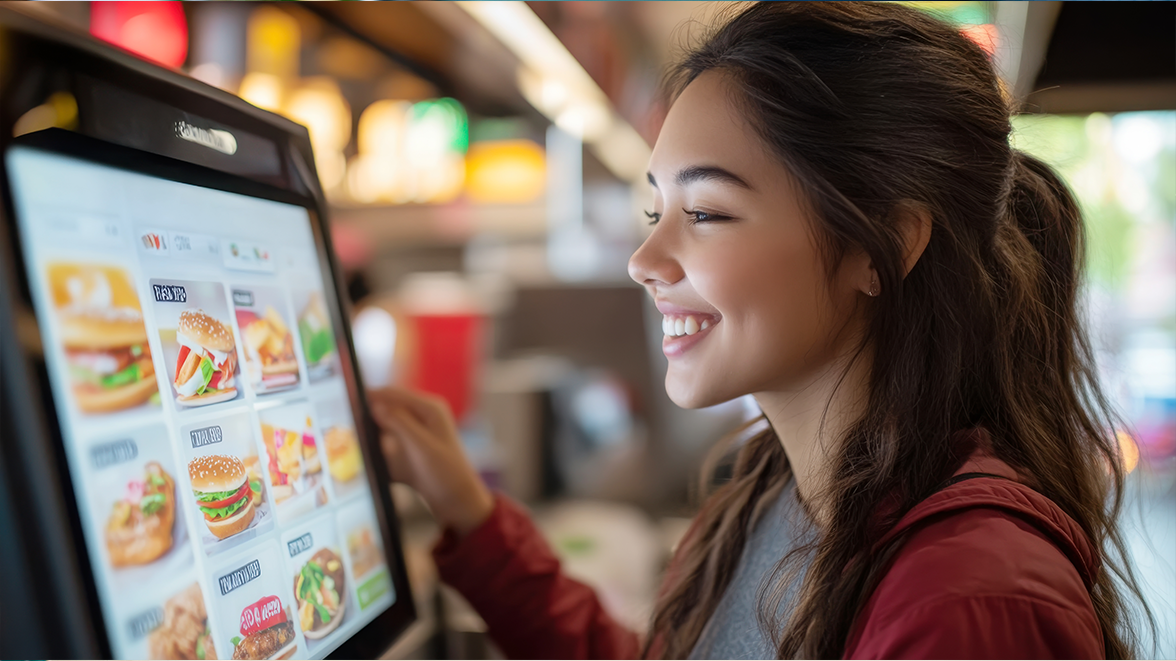Delivering exceptional customer experiences in the fast-paced restaurant industry requires precision and efficiency. Point of sale systems for restaurants streamline operations, fostering loyalty and satisfaction. This guide explains how restaurant POS systems work and their importance as all-in-one management tools for modern dining.
What is a POS System?
Per Investopedia, a POS system is the hardware and software used to process payments and complete transactions, in-person or online, with digital or printed receipts. Initially advanced cash registers, restaurant POS systems now act as integrated platforms, enhancing front-of-house (FOH) and back-of-house (BOH) operations with advanced features.
Core Components of Restaurant POS Systems
Cloud-based restaurant POS systems offer seamless access across devices and real-time data for multi-location management. Key components include:
Order Management
Customers order via counters, tableside, or QR codes, with customization and bill-splitting options. Kitchen display systems provide real-time updates to BOH staff.
Payment Processing
Supporting cash, cards, mobile wallets, and QR payments, these systems ensure fast, secure transactions with digital receipts and tip management.
Inventory Management
Real-time stock tracking and low-stock alerts minimize waste and optimize purchasing.
Workforce Management
Restaurant scheduling software streamlines shift planning, hour tracking, and break alerts, integrating with HR systems.
Reporting and Analytics
Automated reports track profit margins, peak hours, and top items, with analytics offering actionable insights.
Loyalty Programs
Customized loyalty programs enable point earning and redemption, with personalized rewards.
How Restaurant POS Systems Operate
Restaurant POS systems integrate FOH and BOH tasks, creating efficient workflows without multiple tools.
Front-of-House Operations
Ordering Flexibility: Customers order via staff or QR code menus.
Order Customization: Modify orders with instant price updates.
Order Routing: Kitchen displays route orders to prep stations.
Payment Handling: Support for diverse payments, bill splitting, and digital receipts.
Back-of-House Operations
Order Tracking: Real-time updates and prep timers streamline kitchen tasks.
Inventory Updates: Stock is adjusted per order, with low-stock alerts.
Menu Management: Digital menus reflect availability or profitability.
Receipts and Payments: Digital or printed receipts are generated, with transaction logging.
Data Management
Cloud Access: Real-time data is accessible across devices.
Analytics Tools: Custom reports and analytics provide insights for multi-location oversight.
Why Modern POS Systems Are Vital
Seamless Integration: Unified FOH and BOH operations enhance service.
Efficiency and Accuracy: Automation reduces errors in billing and inventory.
Omnichannel Support: Consistent ordering across multiple channels.
Improved Experiences: Faster service, loyalty rewards, and restaurant scheduling software cut costs.
Data-Driven Insights: Reports and analytics drive strategic decisions.
Nova: The Future of POS Systems
Designed by Experts: Nova tackles restaurant challenges with tailored features.
Unified Operations: Automates menu, staff, and task management.
AI-Native Design: Provides upselling, personalization, and predictive insights.
Intuitive Interface: Visual design simplifies training for Gen Z staff.
Integration Flexibility: Connects with delivery, accounting, and CRM systems.
Conclusion
Restaurant POS systems are key to enhancing efficiency, customer satisfaction, and profitability. Nova delivers with integrated, data-driven solutions. Interested in Nova? Book a demo.








Write a comment ...